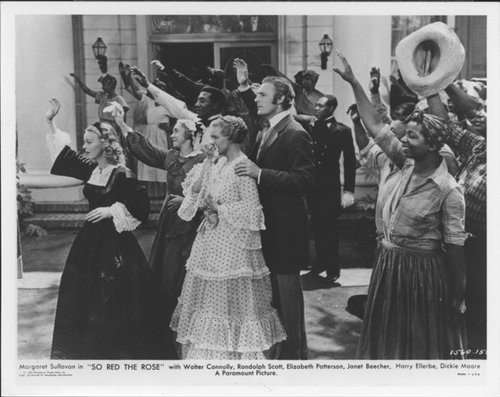Exhibits

Stark Young's biographer described the author as "the most cosmopolitan and multi-talented of the state's major literary figures." While Young traveled extensively in Europe and worked in New York City, he chose his native state of Mississippi as the setting of his first novel. So Red the Rose (1934) relates the tribulations of the semi-fictitious McGehee family -- Young's maternal ancestors -- during the Civil War. The book was a sensation, finishing as the third best-selling novel of 1934. Movie executives demonstrated an interest in adapting the book to film even before it appeared in print. The sensation of the novel, however, did not exactly translate to the screen. According to one reviewer, leading film industry insiders dubbed the movie "So Red the Ink," and claimed that its failure was the principal reason that producers were not as quick to buy the rights for Gone With the Wind.
Letters by Young, however, paint a different picture. He contends that the movie was eagerly anticipated, prompting large premieres in ten of the former Confederate capitals. The film broke box office records for Thanksgiving weekend 1935, and Young states in a letter from December that the movie was a smash in the south and Canada.
Young did not participate in much of the planning and execution of the movie. He wrote to a friend "Although -- Should I Say ‘Because'? -- I had nothing to do with the film of my book, it has been a great success." Changes in the script included the almost complete removal of the McGehee family and a diminished role for the character of Sally Bedford. Originally slated for that part, Pauline Lord departed the picture during production over the matter. Janet Beecher stepped into the role and performed an admirable job in the eyes of the author. All in all, Young was happy with the film, musing that it was "much changed, but often very beautiful." On display are two scripts from the movie signed by Randolph Scott, Margaret Sullivan, Stark Young, Walter Connally and King Vidor, the movie's director. There is a facsimile of the film's three-sheet poster. Also included is an outline drafted by Young describing his ideas for the movie. He writes on the draft "I thought of [doing] it into a film -- this was a draft of my plan. Paramount never saw it."

